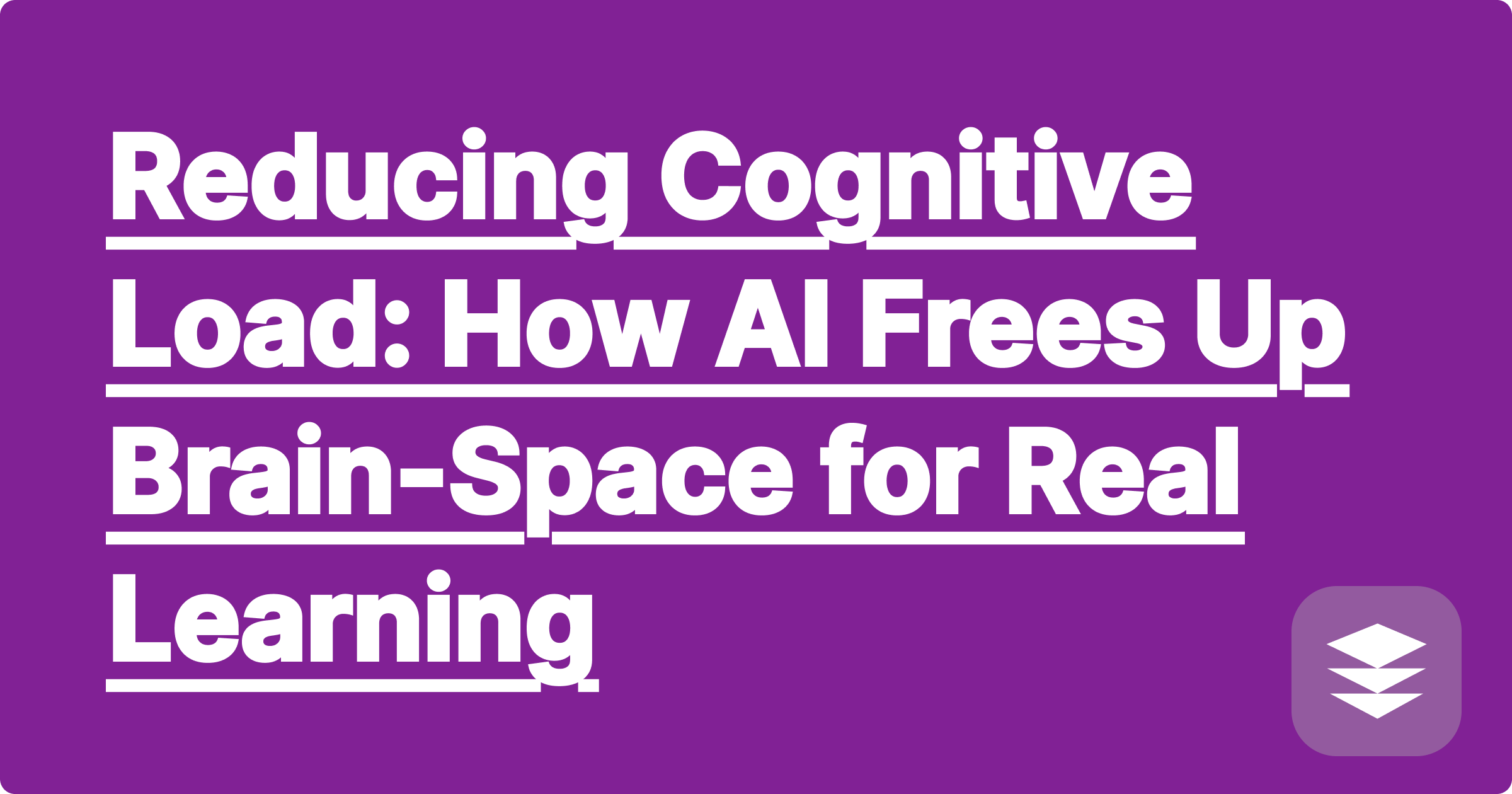
Have you ever sat down to study, surrounded by a mountain of lecture notes, textbook chapters, and multiple browser tabs, only to feel completely and utterly overwhelmed? You spend an hour "studying," but at the end of it, you feel exhausted and can't recall a single thing.
This feeling isn't a sign of laziness or a lack of intelligence. It's a very real phenomenon known as cognitive overload.
Your brain, like a computer's RAM, has a limited amount of working memory. Cognitive Load Theory in education explains that when you try to process too much information at once, your working memory gets maxed out. When that happens, learning stops. You're just spinning your wheels, creating a lot of mental clutter without making any real progress.
The key to effective studying isn't about forcing more information in; it's about strategically reducing the cognitive load so your brain can focus on what's most important: understanding and retention.
According to the theory, your mental energy is drained by three things:
The goal is to minimize extraneous load to maximize the brain-space available for germane load.
This is where a smart AI tool like GPAI Cheatsheet becomes more than just a convenience; it becomes a critical part of a smart study strategy based on cognitive load theory study principles. It automates the tasks that create the most mental clutter.
High Cognitive Load Task (Manual Way)Low Cognitive Load Task (AI Way)Hunting for a key definition across 50 slides.AI automatically extracts all key definitions into one clean block.Manually re-typing formulas and checking for errors.AI instantly pulls all formulas, error-free, into a dedicated section.Trying to find the connection between three different lecture notes.AI consolidates all your notes into a single, unified, and structured document.Deciphering your own messy handwriting.AI presents all information in clean, legible text.
By outsourcing these draining, low-value tasks to AI, you are preserving your precious cognitive resources for the work that matters.
Here’s how to apply this strategy with GPAI Cheatsheet:
[Image: A simple animation showing a cluttered desk with papers and a laptop transforming into a single, clean GPAI Cheatsheet interface on the screen. Alt-text: A visual representation of how to reduce mental clutter with an AI organization tool.]
This is the deep, focused work that actually builds knowledge and leads to high grades.
"Before, studying felt like trying to drink from a firehose. Using GPAI to organize my notes first is like having someone distill that firehose into a single, clean glass of water. I can finally just focus on drinking."
Q1: Will relying on AI to organize my notes make me lazy?
A: No. It makes you more efficient. Think of it like a chef. A great chef doesn't waste time manually chopping every single vegetable; they use a food processor for the prep work so they can focus their creative energy on combining the ingredients and creating a masterpiece. AI is your "food processor" for studying.
Q2: Is this different from just using a summarizer?
A: Yes. A simple summarizer just gives you a shorter block of text, which can still be overwhelming. The "Knowledge Block" approach used by GPAI Cheatsheet is rooted in cognitive load theory study principles. By breaking information into smaller, categorized chunks, it makes the content fundamentally easier for your brain to process.
Q3: Can this help with feelings of being overwhelmed or study-related anxiety?
A: Absolutely. A major source of academic anxiety is the feeling of being overwhelmed by the sheer volume of information. By using AI to reduce mental clutter, you create a clear, manageable starting point. This sense of control can significantly lower stress and make studying feel approachable again.
Your brain is a powerful tool, but its resources are finite. Stop wasting your mental energy on the frustrating, low-level tasks of organizing and searching. Use AI to clear the clutter, reduce your cognitive load, and dedicate your brain-space to what it does best: learning, understanding, and succeeding.
Ready to experience a less stressful, more effective way to study?
[Try GPAI Cheatsheet today. Upload your notes and let AI handle the organization, so you can focus on learning. Sign up now for 100 free credits.]
The Ultimate Study Guide for Your Data Structures and Algorithms Course
AI for Economics: How to Graph Supply, Demand, and Equilibrium
Can AI Write a MATLAB/R Script for Your Data Analysis Task?
My Professor Talks Too Fast: How an AI Notetaker Can Save Your Grade
The 'Lazy' Student's Guide to a 4.0 GPA with AI
How to Use AI to Win Your Next Study Group Session
Is Your AI Homework Helper Making You Smarter? A Scientific Look
The Perfect Gift for a Struggling Student: GPAI Credits Explained
From Procrastination to Preparation: A 3-Day Exam Plan Using AI
Reducing Cognitive Load: How AI Frees Up Brain-Space for Real Learning